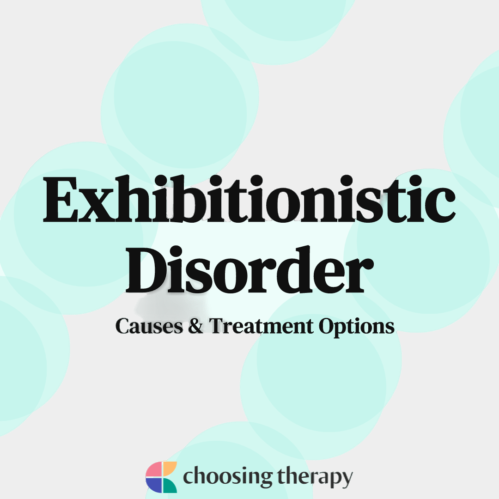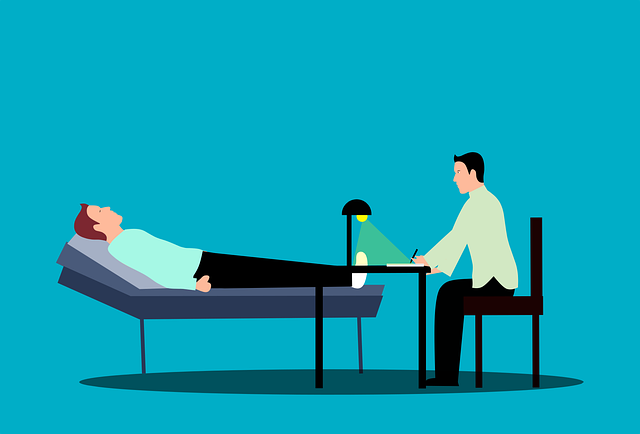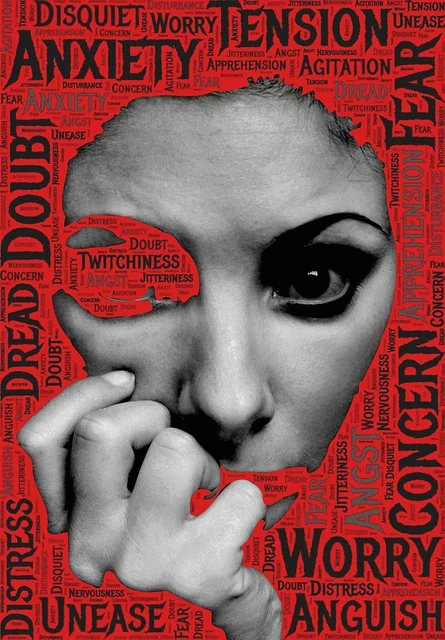The urge, fantasy, or act of displaying one’s genitalia to non-consenting persons, especially strangers, is a defining feature of exhibitionistic disorder.
When chronic and intense aberrant sexual arousal patterns are combined with clinically substantial suffering or disability, the condition is referred to as paraphilia disorder.
Individuals who suffer from exhibitionistic disorder could desire to display their genitalia to adults, children, or both. Even if an individual disputes that they display their genitalia to unwary people or that doing so upsets them, they could still be diagnosed with exhibitionistic disorder if they have done so on multiple occasions.
What is exhibitionistic disorder?
The disorder known as exhibitionistic disorder makes a person obsessively display their genitalia to onlookers, usually in public. Although this conduct stimulates and pleasurably stimulates the genital organs, it causes the exhibitionist great distress.
Exhibitionistic disorder is categorized as a paraphilia disorder, meaning that it is a sexual desire that is extremely dysfunctional and has the potential to be harmful to the individual as well as others. But not all exhibitionistic behavior is bad: Other fetishes and exhibitionism among consenting adult partners are not viewed as dysfunctional.

However, the victims in the clinically important cases are gullible people, some of whom may even be minors. It is crucial to recognize and prevent the negative impulses and behavioral patterns brought on by exhibitionistic disorder.
Obtaining medical attention to assist treat and heal from sexual issues. However, shame has no part in the healing process, just like it does with other mental health issues.
Although the exact prevalence is unknown, it is estimated that 2-4 percent of men suffer with exhibitionistic disorder. While prevalence figures for females are unclear, this illness is less common among them.
It is possible to distinguish between exhibitionism and exhibitionistic disorder. Exhibitionistic disorder is acting on fantasies or urges and being disturbed or unable to function as a result. Exhibitionism is exposing the genitalia to become sexually excited or feeling the need to be viewed by others during sexual activity.
Different Exhibitionistic Disorder Types:
Different forms of exhibitionism exist:
Pure exhibitionistic
Those who display their sexual parts to others from a distance are known as pure exhibitionists. They show their bodies to others, yet they never touch or hurt them physically.
Exclusive exhibitionistics
Individuals who find it difficult to be in a love relationship and are unable to engage in regular sexual intercourse are known as exclusive exhibitionists. They expose themselves in order to achieve a satisfying sexual experience. It is less frequent to have this kind of exhibitionistic condition.
Examples of exhibitionists
The most typical manifestation of exhibitionistic disorder is confronting one or more victims in public. This could happen up close or from a distance to the unwitting person or people. A person suffering from exhibitionistic disorder may display their genitalia in a number of contexts, such as:
- Through a window
- within a vehicle
- In an entryway to a structure or doorway
- a city bus
- inside a mall or commercial building
- In a restroom or changing area
- and numerous additional places
Also examples are
- Publicly committing strangulation
- exposing one’s privates to the public (e.g., while using public transit)
- Having sex or engaging in public masturbation
- sexual behavior in front of the audience
Signs and symptoms
These are the some signs and symptoms of disorder
Behavioral symptoms
Participating in exhibitionistic behavior, such as baring one’s genitalia to strangers, is one of the main indicators of exhibitionistic disorder. This behavior is accompanied by fantasies, cravings, or sexual arousal.
Exhibitionists may struggle to control their urges and experience a strong compulsion to participate in this behavior. This type of behavior is frequently seen in public areas like parks, shopping centers, and bathrooms.

Emotional Symptoms
Embarrassment, guilt, and shame are just a few of the emotional symptoms that people with exhibitionistic disorder may encounter. They can be afraid that law enforcement will find them and feel bad about what they’ve done.
They could also suffer from low self-esteem and feel guilty about what they did. The insatiable cravings of exhibitionists can cause them to feel distressed or hinder their ability to perform at job, school, or home.
Physical Symptoms
Exhibitionistic disorder can manifest physiologically as elevated heart rate, perspiration, and heightened sexual excitement. When exhibitionists reveal themselves to someone, they could feel gratified and excited sexually. Usually, they would pursue this behavior over and over in an attempt to satisfy their lust.
Those who exhibit these urges might only experience sexual fulfillment and excitement when they expose themselves to someone.
Causes
The risk factors for male exhibitionistic disorder include antisocial personality disorder, alcohol misuse, and interest in pedophilia, albeit little is known about them. Additional variables that could be linked to exhibitionism include emotional and sexual trauma in childhood and early sexual obsession.
Some individuals who demonstrate exhibitionistic behavior also have additional paraphilias, which makes them hyper sexual.
According to the notion of courting disorder as it relates to paraphilias, exhibitionists interpret their victims’ startled reactions to their actions as a sign of sexual interest. From the exhibitionists’ perspective, he is flirting. But the actions are not innocuous; some exhibitionists go on to conduct crimes related to sex, including rape.
This illness usually manifests itself in late adolescence or early adulthood. As people age, exhibitionistic sexual desires and conduct may decline, just like other sexual inclinations.
Exhibitionism is a factor in about one-third of sex offenses that authorities are informed about.
Past sexual abuse, antisocial personality disorder, alcohol or drug misuse, and interest in pedophilia are some risk factors for the development of exhibitionistic disorder. Although the exact prevalence of exhibitionistic disorder is unknown, men are nearly always affected. In females, exhibitionistic disorder is seen as uncommon.
It’s only a kink, yet some people, regardless of gender, exhibitionism in a healthy way. It could be a strong desire for others to witness them engaging in sexual activity or experiencing sexual stimulation. However, rather of putting oneself at danger of upsetting victims, many choose to enlist a willing audience or individual in these situations.

Treatment
Regular mental health care is essential for individuals with exhibitionistic disorder to develop coping mechanisms. Psycho therapeutic and pharmaceutical therapies are typically used in treatment, albeit this depends on the particulars of each case.
Psychotherapies
These are the following therapies that are most suitable for exhibitionistic disorder
Cognitive behaviour therapy
Cognitive restructuring is frequently used in cognitive behavioral therapy (CBT) treatments. This approach assists the patient in recognizing and altering the thoughts that underlie their behavior. In order to reduce the temptation of their impulses, they might also undergo coping skills training, which teaches them different ways to act when they start to experience aroused.
Sexual Counseling
Psychotherapy with a qualified sex therapist who specializes in paraphilias can guarantee an informed and nonjudgmental approach. A comprehensive sexual and psychological history will be taken by a sex therapist in order to identify potential risk factors for exhibitionistic interest and its manifestation as desires, fantasies, and actions.
The beginning and context of the symptoms, as well as any alterations in the circumstances or signals that have intensified exhibitionistic ideas or drives, will be examined by the therapist. After that, they’ll probably provide coaching on behavioral and mindfulness practices that a single person or couple can try. Hyper sexuality and mood disorders are two examples of co-occurring psychological illnesses that will be evaluated and treated.
Group therapy
Adults who participate in group therapy may also benefit. The realization that they’re not alone in their struggles and that others would support them in their rehabilitation is one of the finest things about group therapy for someone with exhibitionistic disorder. Treatments like family therapy and relationship therapy are also popular and can aid in the understanding and support of the exhibitionist by the exhibitionist’s loved ones.

Medications
These are the following medications
Depression-fighting drugs
Serotonin reuptake inhibitors (SSRIs) decrease sex drive and can help treat co-occurring mood disorders like anxiety and sadness. Reduced sex drive cannot immediately address the exhibitionistic need without therapy, but it can help with the impulsivity linked to exhibitionistic thoughts and acts. Apart from the adverse consequence of decreased libido, certain research indicates that SSRIs may be beneficial for all forms of impulsive conduct.
Contra-androgen
Members of a class of medications that include medroxyprogesterone acetate and cyproterone acetate can be used to temporarily lower testosterone levels in order to decrease sex drive and facilitate more effective therapy. These medications assist in lowering the recipient’s blood levels of testosterone and prepare them for cognitive restructuring therapy methods.
Managing Disorders of Exhibition
The need for exhibitionism can be controlled in constructive ways. With like-minded people in fetish or lifestyle communities, exhibitionistic impulses to be noticed by others during sexual activity can be suitably channeled. Exhibitionism can be a healthy way to release one’s needs when it occurs in a consenting group setting or with a compatible partner.
In the event that you have exhibitionistic disorder, be sure to:
- Be open and honest with your partner(s) about your dreams and cravings for sex. When you behave in a non-secretive or dishonest manner, your partners are more likely to be understanding and supportive.
- To learn more about your alternatives for lessening obsessive behaviors and co-occurring mental health disorders, speak with a licensed sex therapist.
- Reduce your intake of alcohol and other drugs that impair inhibition, as they can lead to more inappropriate behavior motivated by exhibitionistic tendencies.
- Look for a support group of people who are either coping with exhibitionistic disorder or who have managed to successfully direct their desires, dreams, and actions into a venue for consensual sexual activity.
Keep in mind that the earlier exhibitionistic illness is addressed, the more successfully it can be treated, just like most mental health issues.



